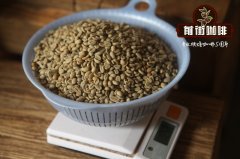coffee roasting| How to understand coffee roasting curve What does roasting curve help roast coffee

What is a baking curve? Why is it so important?
Baking curves help monitor baking by tracking the heat in the drum at critical times throughout the baking process. By demonstrating how the same amount of heat can be applied simultaneously to a batch of products, they can help the oven create guidelines that reproduce the outline of the oven.
Roasting curves can help identify and track the stages coffee goes through during roasting, such as drying, Maillard, and developmental stages. The length of each stage affects the taste of the coffee. For example, the duration of the drying phase of a bean will affect its acidity and body, while the duration of the Maillard phase of a bean will affect its sweetness and caramelization. Baking curves also monitor whether sufficient heat is applied at each baking stage.
Typically, bake curves are used to form reference curves. Following this reference helps the baker recreate the desired baking profile by matching the temperature and time of the baking in progress to those of the reference. For example, a reference curve for roasting Kenyan coffee may contain higher charge temperatures because Kenyan coffee beans tend to be dense. In addition, the reference curve for low acidity Brazilian coffee may contain a longer Maillard phase to increase the sweetness and texture of the coffee.
How coffee processing affects roasting
As natural coffee dries with cherries, coffee beans spend more time in dark, moist conditions, prompting them to ferment and break down before roasting begins, he said. As a result, these beans will need to be roasted slowly to retain their inherent sweetness. Washed-up coffee needs to be roasted faster to retain its inherent acidity.
Select the correct charging temperature
When following the baking curve, observe the indicated charge temperature, which indicates how much energy is in the barrel at the start of baking. Starting with a higher or lower charge temperature than on the curve may run the risk of starting baking incorrectly or losing control of baking later.
Anne Cooper, baking consultant at Equalium Master Roasters, mentioned that starting with too low a charge temperature could put you behind the baking curve. This may force you to step up the Maillard phase to catch up with the curve, resulting in underbaking. When a roast curve for less developed coffee appears in the contest, the flavor description indicates that coffee roasted in this way produces a grassy or hay-like flavor.
If you start at too high a temperature, you may still be able to follow the baking curve. However, in the process, you may generate too much heat in the drum, scorch the beans and produce a burnt, smoky and spicy taste.
regulated Maillard phase
The Maillard phase of baking occurs when its heat causes a reaction between legumes carbohydrates and amino acids. This reaction produces melanin molecules that brown the beans and produce flavor and aroma. A good practice to achieve the desired cup profile is to adhere to the duration of the Maillard phase outlined in the baking curve.
Rushing through or over-roasting the Maillard stage can have a negative impact on coffee. Over-extended phase can produce salty flavor characteristics, which may not be ideal
Dealing with one explosion, development time and turning points
After the Maillard phase there was an explosion. It describes what happens when coffee beans expand due to heat and pressure and suddenly open, releasing steam and carbon dioxide trapped in them. Baking curves that quickly reach a burst (compared to the reference curve) and then fall off quickly may produce a light, bright and non-nutritious taste.
The phase that begins immediately after the first explosion and ends when baking is complete is called the development phase. Bake curves with extended development times will generally have shorter Maillard phases, resulting in more acidity and sweetness sensations.
The time spent in the final stages of roasting, i.e. the development stage, after the first break has a significant effect on brix, acidity, sweetness and overall flavor. The shorter the time, the brighter the seasoning is likely to be and the less likely it is to melt, while the longer the time, the more "developed" or browned the seasoning and the less caramel the flavor.
Important Notice :
前街咖啡 FrontStreet Coffee has moved to new addredd:
FrontStreet Coffee Address: 315,Donghua East Road,GuangZhou
Tel:020 38364473
- Prev

Brazil breeds new coffee varieties Arara Flavor Features How and why coffee varieties matter?
The choice of variety affects coffee flavor, productivity, and desired growing conditions. Consumers are often excited to try varieties such as rose summer, while producers can remain faithful to well-served varieties. In Brazil, however, a new variety caught people's attention and won the quality contest-Arara. Cup scores extended into the mid-1990s, and with toughness
- Next

What is the effect of espresso extraction pressure on flavor? how to adjust the extraction pressure of Italian machine?
Extracted coffee is an important part of our daily life. During the extraction process, a series of complex chemical reactions take place to extract the flavor from the coffee. The focus of this article is not on the extraction process itself, but on a single pressure variable and how it relates to the flavor of our espresso. The explanation for oversimplification of extraction and flavor is that whether it is over-extraction or extraction
Related
- Beginners will see the "Coffee pull flower" guide!
- What is the difference between ice blog purified milk and ordinary milk coffee?
- Why is the Philippines the largest producer of crops in Liberia?
- For coffee extraction, should the fine powder be retained?
- How does extracted espresso fill pressed powder? How much strength does it take to press the powder?
- How to make jasmine cold extract coffee? Is the jasmine + latte good?
- Will this little toy really make the coffee taste better? How does Lily Drip affect coffee extraction?
- Will the action of slapping the filter cup also affect coffee extraction?
- What's the difference between powder-to-water ratio and powder-to-liquid ratio?
- What is the Ethiopian local species? What does it have to do with Heirloom native species?

